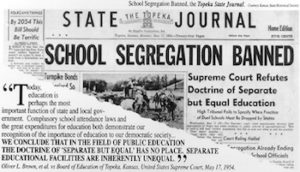
On this date in 1950, Briggs v. Elliott, a civil rights case, was filed. This legal maneuver laid the groundwork for Brown v. the Board of Education, which was filed four years later.
Twenty African Americans from Clarendon County, South Carolina, first filed a suit against school officials on behalf of their children. Harry Briggs, Annie Gibson, and Rev. J. A. DeLaine. With the help of the NAACP, they sought to secure better schools that were equal to those provided for white children. The U.S. District Court found that Black schools were inferior to white schools. Buildings were no more than wooden shacks, transportation and educational provisions did not meet basic needs, and teachers' salaries were less than those received in White schools.
Also, the lower court “ordered the defendants to immediately equalize the facilities [but the children were] denied admission to the white schools during the equalization program.” As a result, their case was appealed to the U.S. Supreme Court. Two months after the filing, the plaintiff’s attorneys moved from pursuing equalizing facilities and getting buses to attacking this segregation. The court ordered schools to be equalized, focusing on equalization and ignoring the broader question of the constitutionality of segregation.
The state's action resulted in an NAACP appeal to the U.S. Supreme Court. The Briggs case evoked an extreme reaction. All of the petitioners suffered swift and severe hardships for their courage. Harry Briggs was fired from his job. Annie Gibson lost her job as a motel maid, and her husband lost land that had been in his family for eight decades. Rev. DeLaine saw his home burned to the ground. Federal Judge Julius Waring, who sided with the activist’s concerns, was forced to leave the state by a joint resolution of the South Carolina House of Representatives.
Historic U.S. Cases 1690-1993:
An Encyclopedia New York
Copyright 1992 Garland Publishing, New York
ISBN 0-8240-4430-4